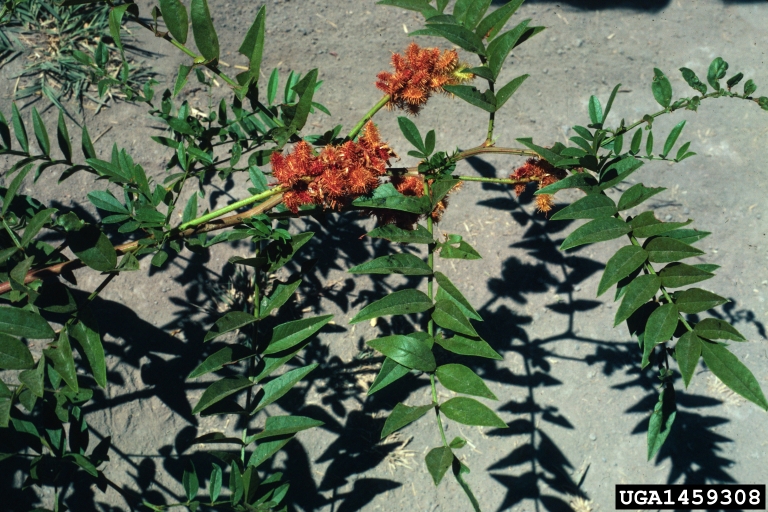Weed of the Month: Wild Licorice
 | Author:
Allison Kosto, MSU Broadwater County Extension Agent
MSU Broadwater County Extension Agent |
Weed of the Month: Wild Licorice
Allison Kosto
MSU Broadwater County Extension Agent
This is a plant with a fascinating history. Wild Licorice, also called American Licorice, is a native plant that was widely used by the Native Americans. It was used as a medicinal plant with a wide range of uses including to aid in curing diarrhea, upset stomach, flu, earaches, toothaches, coughs, chest pain and sore throats. It was also used as a food both raw in the early spring and also by cooking the roots which taste similar to sweet potatoes. Wild licorice, which is a legume, also was researched as a forage crop in the 1950s and was found to be a highly nutritious forage for livestock. However, even with all the good, this plant can be problematic. It has invasive characteristics and a large bur-like seed pod.
Description & Habitat
Wild licorice can be found in a variety of habitats including forested areas, pastures, disturbed areas and along streams and ditches. It prefers moist soils. It is native to North America and is most common in the central and western United States. It is less common in the East.
Wild licorice is a perennial (life cycle of more than one year). It can grow 3 to 5 feet tall. Leaves are smooth with many leaflets similar to vetch plants. Yellowish-white flowers are on short stalks in a cluster that resembles a spike. The flowers develop into seed pods by late summer. Seed pods are brown and covered in hooked spines that create a bur which is half to one inch long. Wild licorice can spread by seed or through its underground rhizomatous root system which makes it difficult to control.
The bur seed pod is one of the biggest issues with this plant. It can become entangled in livestock hair and sheep wool. This can decrease the value of wool when sold. Due to its extensive root system, wild licorice also has the ability to colonize disturbed or overgrazed sites, decreasing the presence of desired species.
Management
Since wild licorice is a native species, not a lot of research has been done on its control. Mowing and hand pulling are likely not very effective due to its rhizomatous root system. However, there may be options for small infestations. Grazing may be an option to help reduce the prevalence of the plant but will not fully control it. Additionally, livestock can aid in spreading seeds due to the burs.
Herbicides are also an option. The most commonly used chemicals include Banvel, Capstone, Chaparral, Grazon (restricted use), Milestone and Tordon (restricted use). Always read and follow the entire label when applying herbicides. Common chemical names are used for clarity but does not imply endorsement of a product or brand.
For assistance on weed identification and management, contact the MSU Extension Office in Broadwater County at 406-266-9242 or allison.kosto@montana.edu.
Article Images
Click on Image Thumbnail(s) to view fullsize image
PhotoCredit: Photo Credits: Allison Kosto
Image 1 Caption: Wild Licorice
Photo Credits: Allison Kosto
